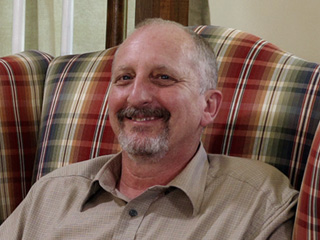Publisher's note: The article below appeared in John Hood's daily column in his publication, the Carolina Journal, which, because of Author / Publisher Hood, is inextricably linked to the John Locke Foundation.
RALEIGH As Democrats and Republicans in this election year continue to debate the optimal level, type, and distribution of the tax burden, they are paying insufficient attention to what I believe is a greater impediment to economic growth: the rising burden of regulations.
Both taxes and regulations involve government imposing a cost on households and businesses. Policymakers expect, hope, or at least assert that the benefits of these actions - more spending on public services or less pollution, for example - exceed the costs. But while you can see the magnitude of taxes and spending in government budgets, there is no comparable accounting of the annual cost of complying with regulations, or their annual benefits. These effects show up in private budgets, or in models that forecast what would have happened if the regulations hadn't been imposed.
To say that we need
a more complete and timely accounting of regulatory effects is not to question the legitimacy or worth of regulation. Some governmental rules really do generate more public benefits than costs. Others don't. We simply can't have a meaningful conversation about the matter, however, without some attempt at quantifying the "regulatory budget" of federal, state, and local governments, preferably on an annual basis.
In lieu of such a comprehensive undertaking, we can still get some sense of what is going on by looking at the public and private data already available. For example, a new study commissioned by the
Manufacturers Alliance for Productivity and Innovation (MAPI) strongly suggests that the regulatory burden has been on an upward trajectory for many years.
The MAPI study looked only at federal regulations affecting manufacturing, so it leaves out such recent initiatives as the Dodd-Frank finance bill and the Obamacare legislation. Still, it offers some insight on regulatory costs affecting a crucial segment of the nation's economy.
According to the study, the number of major regulations - those with a cost of $100 million or more - has increased substantially during the past two decades. The Clinton administration averaged about 36 major regulations a year by that definition. Under George W. Bush, the frequency of such regulations grew to an average of 45 per year. Under Barack Obama, agencies have averaged 72 major regulations per year.
Here's another way to think about the trend: The number of regulation on manufacturing at an average annual rate of nearly 8 percent while manufacturing output grew by an average annual rate of just 0.4 percent.
Again, perhaps some of these rules are likely to produce more long-term benefits than costs. But others would never have been a rigorous cost-benefit test - and were never subjected to such a test before enactment. Policymakers and interest groups simply assumed that the new regulations would have significant benefits. Historical evidence has shown many such assumptions to have been wrong in the past.
In my recent book Our Best Foot Forward, I discussed the effects of overregulation on economic growth and cited a number of examples - such as recent air-quality rules and occupational licensing - in which the cost to producers and consumers have far outweighed any conceivable health or safety benefits to the public.
"Those who believe in limited, constitutional government also believe in the legitimacy of taxes and regulations," I wrote, "but only when they are truly needed to accomplish a legitimate public purpose." Part of establishing the existence of a "legitimate public purpose" is to subject any proposed regulation to a rigorous cost-benefit test, with a particular emphasis on the disproportionate effects of regulatory compliance costs on entrepreneurs and high-growth firms.
This is not a theoretical matter. Overregulation harms the competitiveness of manufacturing, transportation, and other American industries. We can't afford to keep shouldering its ever-increasing burden.
Hood is president of the John Locke Foundation and author of
Our Best Foot Forward: An Investment Plan for North Carolina's Economic Recovery.


























